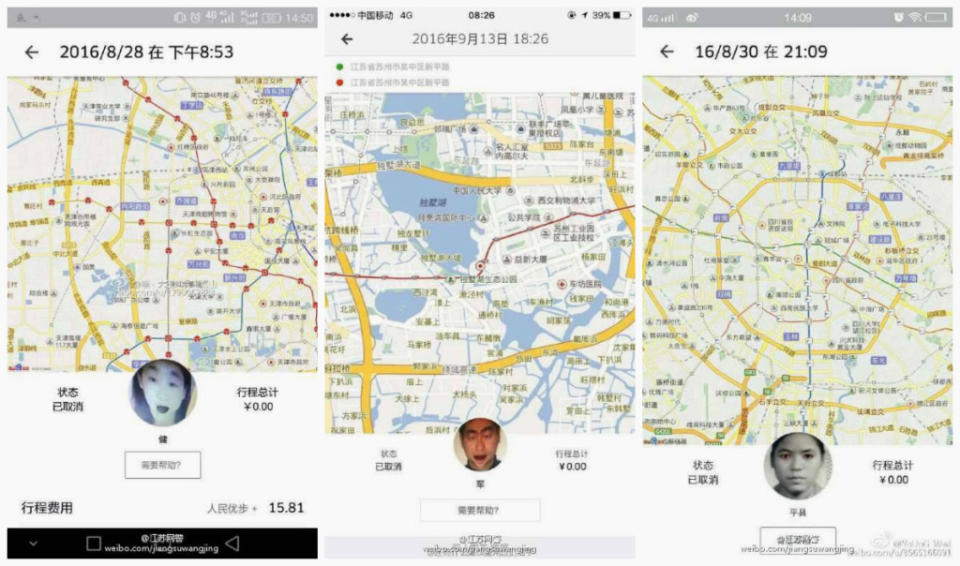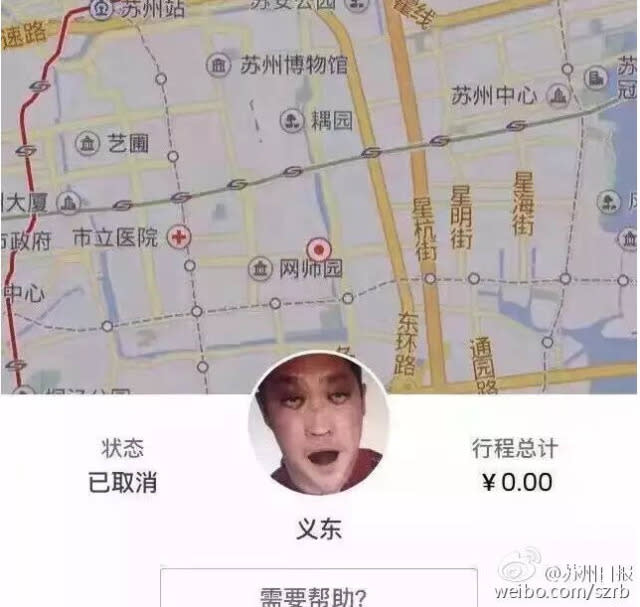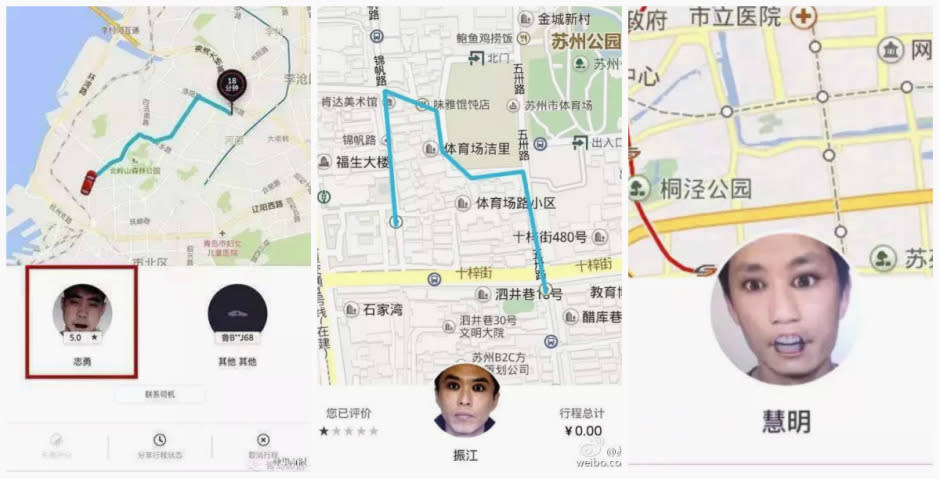Uber’s terrifying “ghost drivers” are freaking out passengers in China

Halloween is still weeks away but some Uber drivers are already painting their faces to scare unwitting passengers in China.
Passengers using the ride-hailing app in several Chinese cities have reported seeing their requests picked up by drivers with creepy profile photos of zombie faces. According to Chinese news site Sixth Tone, the point of these ghostly profiles is to scare passengers into canceling the trip, so they are fined for a few yuan (less than a dollar), which goes to the driver.

Happy Halloween. (Image from Weibo)
“Ghost driver” complaints have emerged across China, including in Tianjin, Qingdao, Chengdu, Xiamen, Beijing, Shanghai, Zhengzhou and Suzhou, according to NBD News (link in Chinese).
Other passengers have reported seeing their rides accepted, but then their trips were “started” by the driver on the app before they even get to the car. These “ghost rides” last less than a minute, with the driver charging customers between 8 and 15 yuan (about 1 to 2 dollars) for a ride that never happened. Calls to the drivers in these cases are never picked up, according to The Paper, a state-owned media. Passengers can however eventually be reimbursed by Uber China if they lodge a complaint.

(Image from Weibo)
It is not the first time Uber China faces driver scams.
As Quartz reported last year, Uber drivers in China receive a subsidy from the company for each trip they make. The generous original subsidy, intended to attract drivers to use the Uber platform, amounted to up to 300 yuan (about US$50) for every 30 trips and 400 yuan for every 40. In June, the Financial Times reported that subsidies had been steeply reduced, though drivers say they still benefit today.
Subsidies incentivize drivers to bump up the number of rides they make. Instead of hoping for longer trips like a normal taxi might, Uber scammers may try to earn starting fees and subsidy cash on fake and cancelled trips, while saving on fuel.

(Image from Weibo)
“We have taken immediate actions and banned these reported individual fraud accounts while continuing to investigate and crack down on any fraudulent behavior to protect rider and driver interests,” an Uber spokesperson wrote to Quartz.
In an attempt to prevent driver fraud, Uber introduced a facial recognition feature April this year. The feature matches drivers’ faces to their profile pictures when they first register on the app, and also runs periodical facial recognition tests to make sure, in theory, that the driver behind the wheels is the person shown on their profile pictures.
Reports of these “ghostly”-looking profile pictures suggest that the feature hasn’t been as effective as Uber would have hoped.

Sign up for the Quartz Daily Brief, our free daily newsletter with the world’s most important and interesting news.
More stories from Quartz:

 Yahoo Finance
Yahoo Finance 